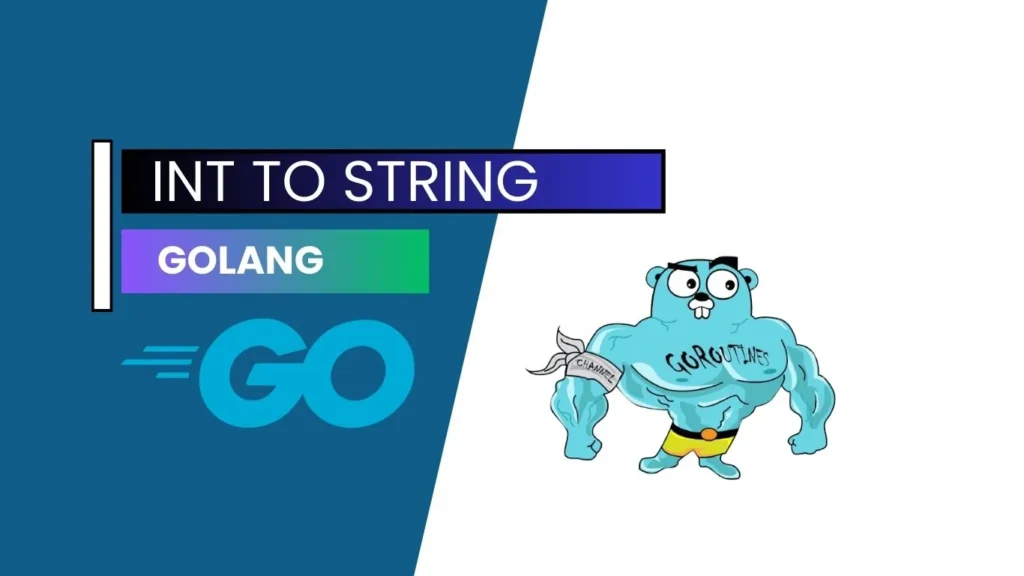
Integer to string conversion is an important task in many programming languages, including Golang. Converting integers to strings is useful for a variety of tasks, such as generating output for logging or printing data to the console. In this guide, we’ll explore three different methods for converting integers to strings in Golang. We’ll provide real-world code examples and discuss the best practices for each method.
Method 1: Using the strconv.Itoa() function
The strconv package in Golang provides a simple way to convert integers to strings using the Itoa() function. Here’s how to use it:
package main
import (
"fmt"
"strconv"
)
func main() {
myInt := 10
myString := strconv.Itoa(myInt)
fmt.Println(myString)
}
In this example, we define an integer variable called myInt and set it to 10. We then use the Itoa() function to convert myInt to a string and assign the result to myString. Finally, we use fmt.Println() to print the resulting string to the console.
Method 2: Using fmt.Sprintf()
The fmt package in Golang provides another way to convert integers to strings using the Sprintf() function. Here’s how to use it:
package main
import (
"fmt"
)
func main() {
myInt := 42
myString := fmt.Sprintf("%d", myInt)
fmt.Println(myString)
}
In this example, we define an integer variable called myInt and set it to 42. We then use fmt.Sprintf() to convert myInt to a string using the “%d” format specifier, which indicates that the argument should be treated as a decimal integer. We assign the resulting string to myString and print it to the console using fmt.Println().
Method 3: Using strconv.FormatInt()
The strconv package in Golang provides a fourth way to convert integers to strings using the FormatInt() function. Here’s how to use it:
package main
import (
"fmt"
"strconv"
)
func main() {
myInt := int64(10)
myString := strconv.FormatInt(myInt, 10)
fmt.Println(myString)
}
In this example, we define an integer variable called myInt and set it to 10. We then use strconv.FormatInt() to convert myInt to a string using the base 10 format specifier. We assign the resulting string to myString and print it to the console using fmt.Println().
It’s important to note that FormatInt() handles signed integers correctly by including a minus sign to indicate that the number is negative.
Comparison of the Methods
Comparison of the three methods, including performance considerations and best use cases
Now, let’s compare the three methods for converting integers to strings in Golang:
fmt.Sprintf(): This method is simple and easy to use, but it may not be the most efficient in terms of performance. It’s suitable for small and simple programs that don’t require high performance.strconv.Itoa(): This method is more efficient thanfmt.Sprintf(), as it avoids the need to create a temporary buffer. It’s suitable for programs that require higher performance thanfmt.Sprintf().strconv.FormatInt(): This method is specifically designed for signed integers and provides more control over the output format. It’s suitable for programs that require more control over the output format and need to handle negative numbers.
Recommendation on which method to use in different situations
In terms of performance, strconv.Itoa() is generally faster than fmt.Sprintf() due to the avoidance of creating a temporary buffer. strconv.FormatInt() may be slightly slower than strconv.Itoa(), but provide more control over the output format.
Overall, the choice of method depends on the specific use case and performance considerations. If performance is a top priority, strconv.Itoa() and strconv.FormatInt() are good options. If simplicity and ease of use are more important, fmt.Sprintf() may be the best choice.
Conclusion
In this article, we explored three different methods for converting integers to strings in Golang. We discussed the benefits and drawbacks of each method and provided code examples to illustrate how to use each method. By understanding these different conversion methods, you’ll be better equipped to handle integer-to-string conversions in your own Golang programs.
your comments are appreciated and if you wants to see your articles on this platform then please shoot a mail at this address kusingh@programmingeeksclub.com
Thanks for reading 🙂





